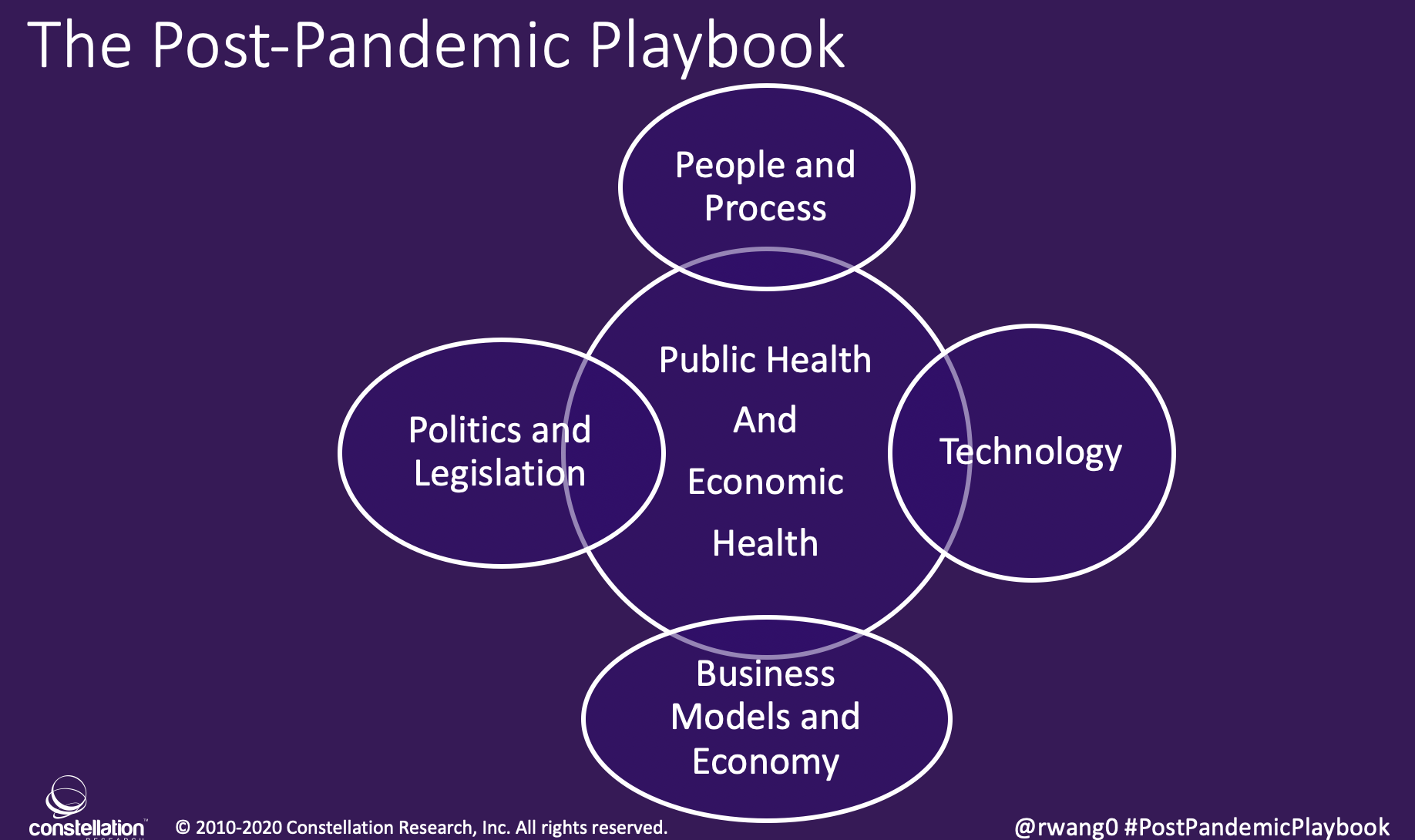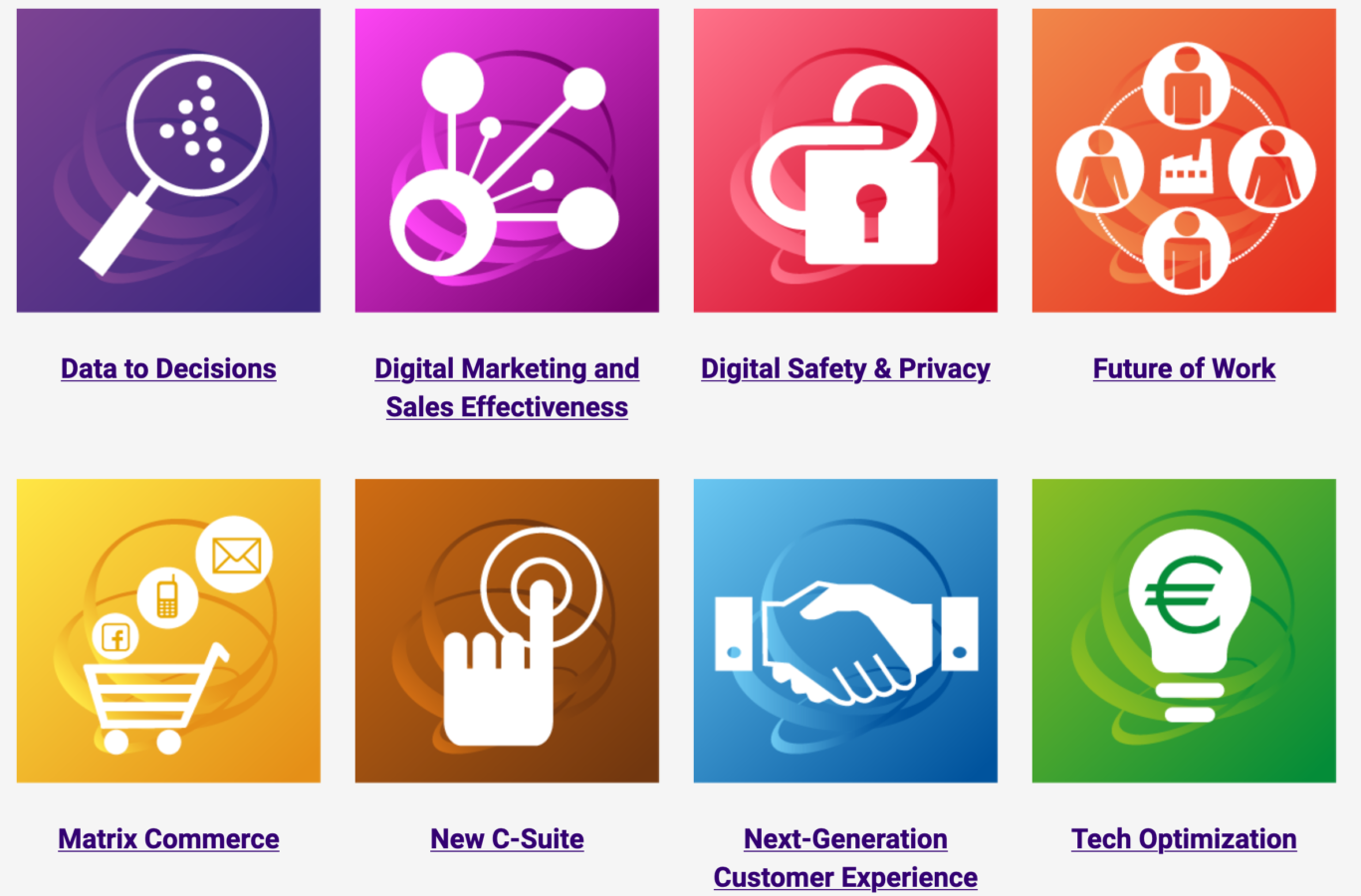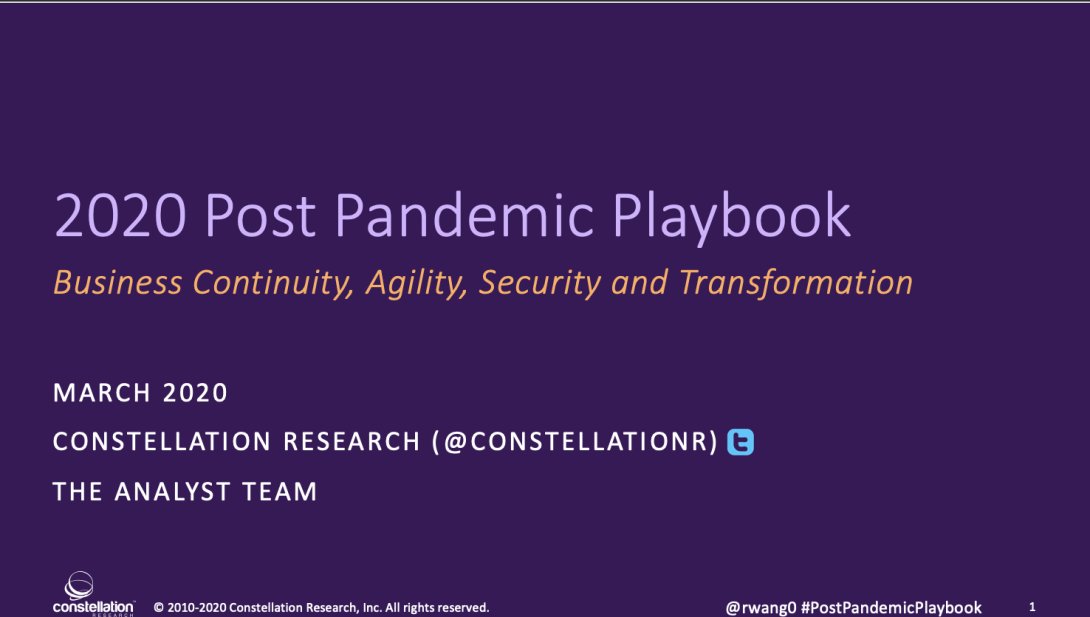Understand The Key Priorities In A Post Pandemic Response
Over the past three weeks, Constellation Research, Inc. has fielded hundreds of calls from CXO's about what to consider in the business and technology response to the coronavirus and Covid-19 fall out. In fact, on Friday April 3rd, Constellation convened a conversation with more than 40 CXO's on strategies during the Constellation Executive Network Office Hours call. (The next one will be May 1st, 2020 at 7:00 am Pacific Time).
The conversations with clients and the analysis from the research team have resulted in a Post Pandemic Playbook that considers the context of public health and economic health with (see Figure 1):
- People and process
- Technology
- Business models and economy
- Politics and legislation
Figure 1. The Post Pandemic Playbook

Source: Constellation Research, Inc.
Building off of Constellation's PESTEL frameworks, the result is an actionable playbook of what's required for success for executives seeking guidance in Constellation's business themes (see Figure 2)
Figure 2. Constellation's Business Themes

Source: Constellation Research, Inc.
PEOPLE and PROCESS
Leaders in the human resources, communications teams, business operations, and other related areas have identified these areas for prioritization:
- New leadership models. Decentralized models will emerge as well as a shift to both a responsive and responsible approach. These new dynamic leadership models adjust as conditions change.
- Trust is THE currency. A scarcity of trust for institutions, media, and politicians have exacerbated public policy efforts to control the virus. Brands and enterprises must guard their brand security and continue to earn the trust of stakeholders.
- Work from home policies. While many organizations may have had policies for a fraction of the workforce, recent shelter in place policies place the majority of workers at home. Organizations must help their team mates understand how to work in this new environments, protect their mental health, and find balance between work and home.
- Reskilling and retraining. As market conditions evolve, teammates may want to take the time to invest in new skills. Organizational teams may want to share new techniques in the future of work.
- Perception and communications. Decentralized management and a distributed workforce requires strong internal communications and brand management. New means of communications from internal messaging apps to collaboration spaces will facilitate internal communications requirements.
- Crowdsourcing. One area expected to pick up in adoption is crowdsourcing as organizations cast a wider net in their search for talent to rapidly respond to business challenges.
- Gig economy capacity. Concerns about adding to headcount will lead to broader inclusion of gig economy workers to adjust for increases and decreases in capacity.
- Mental health support. Leaders should consider deployment of mental health programs to address the additional stress created by work from home policies. The combination of limited connectivity, economic uncertainty, additional people in cramped home environments, and PTSD from media sensationalism will place massive stress on team members.
- Safety. Predators and hackers will attack the new environment. Policies should consider how to address added safety requirements on home networks as well as physical safety in the event of riots and other potentially political instability.
TECHNOLOGY
Chief information officers, chief digital officers, chief technology officers, chief information security officers, martech execs, and other business and IT related disciplines have ranked the following areas as key investments in the post pandemic playbook:
- Business continuity planning. Almost every technologist has been asked by their executive team how to plan for security outages, power failures, natural disasters, and now pandemics. Both process and technology playbooks need to be created to consider how to service the core business and key stakeholders during the pandemic.
- Resiliency. Organizations must think of creative approaches to provide continuous availability, workforce mobility, and flexible access to compute and storage for both planned and unplanned events.
- Cloud push. Projects to support hybrid cloud, multi-cloud, and private clouds will accelerate. Clients investing in self-reliance and redundancy where possible may consider adding mainframe capabilities to their private and public cloud environment.
- Analytics and precision decisions. The push for accurate and rapid forecasting has placed analytics and precision decisions in the spotlight. Business planning, forecasting, and analytic investments have risen in most enterprises as they plan for all possible business scenarios.
- AI, automation and autonomous. Worsening economic conditions, the need to reduce FTE's, and the shift away from redundant and repetitive processes hasten automation efforts. AI projects that improve scale have received accelerated investment. The shift to an autonomous enterprise will accelerate post pandemic.
- Cybersecurity. To add insult to injury, hackers have stepped up phishing and DDoS attacks during the pandemic. CISO's have upped security efforts to protect work from home access as well as other attack surfaces.
- Privacy. A war on privacy has emerged in the interest of public health. Organizations must refrain from infringing on privacy rights of the individual afforded by the 4th amendment in the US Constitution, European GDPR rules, as well as other privacy regulations. Protecting client privacy builds trust in today's chaotic and apocalyptic environment.
- Digital acceleration. Most CXO's have expressed an push to digital business models. From contact less ordering, to buy online to pick up in store, to subscription business models, the post pandemic environment will see digital acceleration as a key priority.
- Remote employee tool kits. Enterprises must build easy to use tools to enable employees and team members to succeed at work. Like crash kits in healthcare, IT teams are building tool kits that include software, hardware, processes, and access to improve the work from home experience.
BUSINESS MODEL AND ECONOMY
Board of directors, CEO's, CFO's, CMO's, strategy officers, and corporate development personas will want to reassess the short term and long term strategy for success. Here are the key issues:
- Massive M&A environment. Historical low valuations will lead to acquisitions of talent, intellectual property, customer base and markets, as well as removing competition. Companies with the most cash on hand will lead this M&A cycle. A quick look at the top 10 organizations with the most cash on hand shows over $.700 trillion in cash on hand.
 R "Ray" Wang
R "Ray" Wang R "Ray" Wang
R "Ray" Wang
